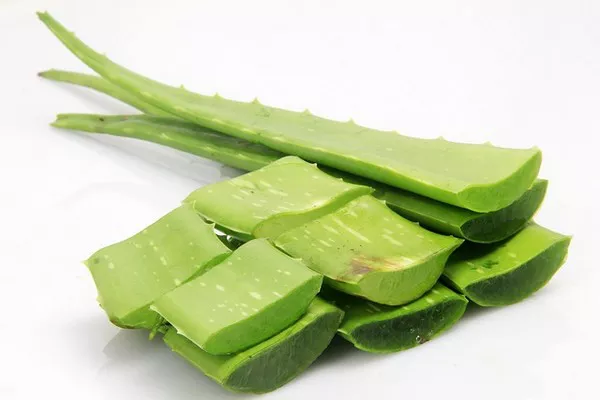Succulents have become increasingly popular in recent years due to their low maintenance requirements, unique aesthetics, and versatility in both indoor and outdoor settings. These hardy plants are known for their ability to thrive in arid conditions, making them an excellent choice for beginners and experienced gardeners alike. In this comprehensive guide, we will explore the key principles of succulent care and provide valuable insights on how to grow succulents successfully.
Selecting the Right Succulents
The first step in growing healthy succulents is selecting the right plants for your environment and skill level. There are thousands of succulent species and varieties to choose from, each with its own unique requirements. Here are a few factors to consider when selecting your succulents:
a. Light Requirements: Different succulents have varying light preferences. Some thrive in full sunlight, while others prefer partial shade. Research your chosen succulent’s specific light needs to ensure it receives the appropriate amount of light.
b. Climate Compatibility: Consider your local climate when choosing succulents. Some succulents are more cold-hardy, making them suitable for outdoor planting in colder regions, while others thrive in warm, tropical climates.
c. Container or Ground Planting: Decide whether you want to grow succulents in containers or directly in the ground. Containers offer more control over soil conditions and placement, making them ideal for beginners.
Soil Mix and Drainage
Succulents have shallow root systems and are sensitive to waterlogged soil, so proper drainage is crucial. Choose a well-draining soil mix or create your own by combining potting soil with perlite or coarse sand. The ideal soil mix should allow water to flow through quickly, preventing root rot.
When planting succulents in containers, make sure the pots have drainage holes at the bottom. This allows excess water to escape, reducing the risk of overwatering. Additionally, elevating the pots slightly on pot feet or a stand can further enhance drainage.
Watering Wisely
One of the most common mistakes in succulent care is overwatering. Succulents are designed to store water in their leaves and stems, which means they can survive long periods without irrigation. Here are some guidelines for watering succulents:
a. Allow the Soil to Dry: Before watering, ensure that the top inch or two of the soil is completely dry. Stick your finger into the soil to gauge its moisture level. If it feels dry, it’s time to water.
b. Water Thoroughly: When you water your succulents, do so thoroughly. Water until you see excess water draining from the bottom of the pot. Then, empty the saucer under the pot to prevent the plant from sitting in standing water.
c. Frequency: The frequency of watering will depend on factors like the plant’s location, the climate, and the type of succulent. In general, water less frequently during the dormant winter months and more often in the active growing season.
Providing Adequate Light
Succulents require ample sunlight to thrive. Insufficient light can lead to stretched, etiolated growth, where the plants become leggy and weak. Here are some tips for providing the right amount of light:
a. Indoor Succulents: If you’re growing succulents indoors, place them near a sunny window where they can receive indirect sunlight for at least six hours a day. South or west-facing windows are usually the best choices.
b. Outdoor Succulents: For outdoor succulents, choose a location that receives plenty of direct sunlight. Morning sun and afternoon shade can be ideal in hot climates to protect them from scorching heat.
c. Rotate Plants: To ensure even growth and prevent one side of the plant from leaning toward the light source, rotate your succulents every few weeks.
Temperature and Humidity Considerations
Succulents are well-suited to a wide range of temperatures, but extreme cold or heat can stress or damage them. Here are some temperature and humidity guidelines:
a. Temperature Range: Most succulents thrive in temperatures between 60°F and 80°F (15°C to 27°C). They can tolerate slightly cooler or warmer conditions, but prolonged exposure to extreme temperatures should be avoided.
b. Protect from Frost: If you’re growing succulents outdoors in a colder climate, bring them indoors or provide protection during frost or freezing conditions.
c. Humidity Levels: Succulents generally prefer low humidity levels. If you live in a high-humidity environment, ensure good air circulation around your plants to prevent moisture-related issues like fungal growth.
Fertilizing Succulents
Succulents have modest nutrient requirements, and excessive fertilization can harm them. Use a balanced, water-soluble fertilizer diluted to half strength. Apply the fertilizer during the growing season, typically from spring through early fall, and avoid fertilizing during the dormant winter months.
Pruning and Maintenance
Regular maintenance is essential to keep succulents healthy and visually appealing. Here are some pruning and maintenance tips:
a. Remove Dead Leaves: As succulents grow, older leaves may wither and die. Gently remove these dead leaves to maintain the plant’s appearance and reduce the risk of pests and diseases.
b. Pinch and Trim: To encourage branching and a more compact shape, pinch or trim the tips of your succulents’ stems. This can create a fuller, bushier appearance.
c. Repot When Necessary: As succulents grow, they may outgrow their containers. Repot them into slightly larger pots when you notice overcrowding or the soil becoming depleted of nutrients.
Conclusion
Growing succulents can be a rewarding and enjoyable experience when you understand their specific care requirements. By selecting the right succulents, providing proper soil and drainage, watering sensibly, and giving them the right amount of light and temperature, you can cultivate healthy and vibrant succulent plants that will thrive for years to come. Remember that patience and observation are key in succulent care, as you fine-tune your techniques to create an optimal environment for these fascinating and resilient plants.


